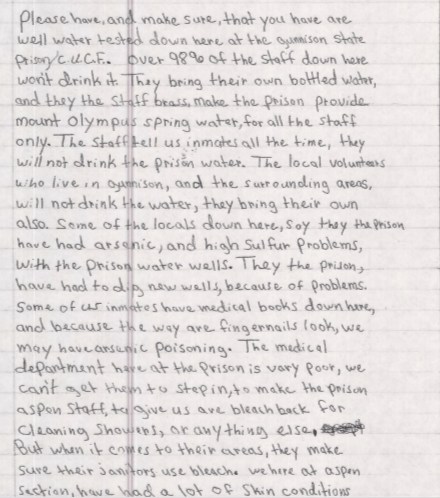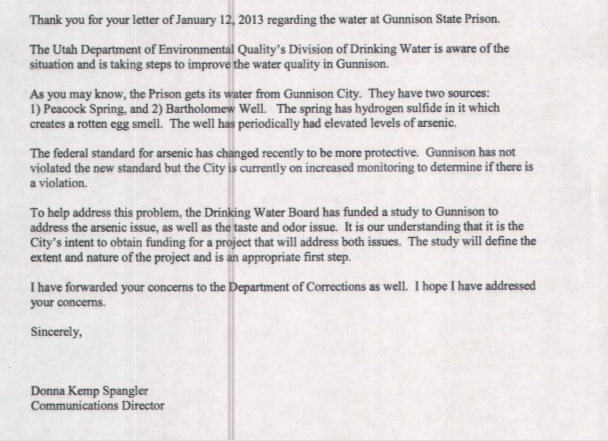Hai Zhou
Human Rights Defense Center (HRDC)
Lake Worth, FL, United States
Hi everyone! Thanks for checking out my second blog about mass incarceration and environmental health. I am now in Lake Worth, a beautiful place where I am welcomed by the beautiful sunshine every day! My reverie with the wonderful weather and beautiful beaches, however, soon vanishes when I start my work. The topic of my study is not very appealing, and in fact it is a bit dreary. In this blog I would like to share a few thoughts and findings about the Prison Ecology Project.
After having an in-depth conversation with Paul Wright and Alex Friedmann, two leaders of HRDC, I had a clearer picture of how the environmental hazards are affecting prisoners and staff inside correctional facilities, as well as people living in the adjacent community. The idea of toxic prisons can arise from two different types of circumstances: the site where a prison is located is in close proximity to environmental hazards (i.e., landfill, abandoned coal mine, waste dump site), or the prison itself is the source of pollutants (i.e., improper discharge of sewage, dumping of coal ash they use to power the generator). Given that prisoners are an invisible population—most prisons are placed in remote areas out of the sight of general public—we want to raise awareness about the environmental factors at play by making more information accessible to the general public.
We figured out that there are two ways of procuring the needed information. We can use the database of the prospective state agencies to search data and documents, and if these are not available on their websites, we can capitalize on the Freedom of Information Act (FOIA). I started drafting public record request letters and sending them to individual state agencies that are in charge of environmental protection. The requested information includes actual pollution violations, as opposed to violation of paperwork, by correctional facilities in each corresponding state over the past five years.

I have found related documents from Arkansas, Colorado, Nevada, Pennsylvania, and Utah, thanks to their transparency and user-friendly website design. Throughout the open record request process, most states’ environmental agencies have been very responsive, making the research project less daunting than it seems to be. So far, I have received records and documents regarding environmental violations from the states of Arizona, Hawaii, Kentucky, Michigan, New York, Ohio, Virginia, and West Virginia, and I would like to express my gratitude for their gracious support.

A review of these incident and compliance reports reveals that many correctional facilities, both state prisons and local jails, have some issues with discharging sewage into local rivers either on an expired permit or in excess of the permitted level. Other violations include potential contamination of drinking water supplies, dumping coal ash next to a prison complex rather than a waste dump site, and air pollution that exceeds opacity limit.
As I mentioned in my first blog, the fight for prisoners’ environmental health is no easy task, especially in a time when the Trump administration aims to eliminate the EPA’s environmental justice office, whose major function is to protect people from getting exposed to environmental hazards (you can find a link below). The framing of toxicity is key to improving the abhorrent conditions: besides winning the public’s sympathy for inmates, we need to acknowledge the fact that prisons themselves can be sources of environmental hazards. Hopefully, by exposing this information to the public, more people will be cognizant of the toxicity of prisons, will pay more attention to the health conditions of the inmates inside, and will demand criminal justice reform.

